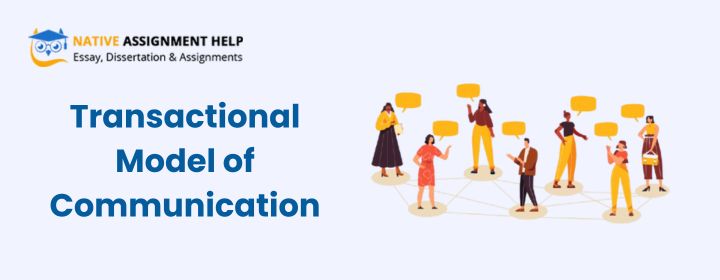
Transactional Model of Communication: What You Need to Know
If you think communication is about talking and listening, you are missing half the picture. It's just not about word exchange, but also about how we connect and respond with others. There are many communication models used to facilitate interaction. Some models involve one-way communication, while others allow both parties to participate on a turn-by-turn basis. However, the question is whether these ways of communication are sufficient in this fast-moving world.
In real life, we speak, listen and react all at once, and that’s where the transactional model takes an important place. It reflects how we communicate, particularly in the workplace. This model's qualities are vast, and we will cover them in this blog.
What Is The Transactional Model Of Communication?
As communication methods developed over time, the transactional model is a modern way of interaction. The reason this model is important in today’s world because it completely changes the way we communicate. Despite older models' one-way and turn-taking process, it offers a dynamic and ongoing exchange. In simple terms, all participants are senders and receivers at the same time.
You can understand this from an office meeting where one person talks and others can react, ask questions, and nod. This enables us to keep a conversation more realistic for everyday communications. To fully understand what makes this model so useful, it needs to have a clear overview of other communication models. Let’s cover this in the next section.
Transactional Model Vs Other Communication Models
You might wonder why the transactional model is the most effective when other models exist for communication. The reason behind this is its convenient approach, which is not possible with others. Here is a clear example showcasing why this model is more useful:
|
Communication Model |
Significance |
Usage |
Examples |
Linear Model |
One-way communication without any feedback |
A sender transmits a message, and the receiver only listens |
Watching TV or listening to a radio broadcast |
Interactive Model |
Two-way communication follows a turn-based system |
The receiver only replies once they get a chance. |
Email exchange or text messaging |
Transactional Model |
Real-time and two-way communication |
Both the sender and receiver can participate |
Virtual calls or face-to-face conversations |
The comparison above shows how the transactional model is effective in terms of effective communication. This is the reason why the modern world highly includes this model in daily conversation. Now, it’s time to uncover some of its key elements.
Key Elements of the Transactional Model
This model goes beyond the simple delivery of messages by making the conversation simultaneous. It shaped the communication with context, feedback and shared understanding. Below, we have defined the major components that make communication flow better:
- Communicators: Instant reaction happens in this model because both the sender and the receiver are communicators. They can receive messages while giving feedback in real time.
- Message & Channels: Facial expressions, spoken words, gestures and everything that carries meaning are used to exchange messages.
- Context: Messages are shared according to the situation or environment. Key factors such as emotions, relationships and background affect the communication.
- Feedback: Ongoing feedback takes place throughout the conversation. Nods, replies, questions and even silence give meaning.
- Noise: Outside noise, poor internet connection, distraction and anything that interrupts the communication is Noise.
- Shared meaning & mutual responsibility: Both communicators are mutually responsible for creating understanding. They ensure that the message is clear and meaningful.
These elements showcase the efficiency and nature of transactional communication. Along with its solid foundation, it’s also important to know its working process, which we have shared next.
How the Transactional Model Works (Step-By-Step)
The transactional model gives a clear and effective way to make the conversation understandable. To get an idea about this model workflow in everyday life, we have given a step-by-step process below:
- Message Creation: The conversation begins when one person shares their thoughts or ideas. For example, ‘Our project deadline is coming soon’.
- Channel Use: Sender's message is transmitted through a medium such as facial expressions, body language or spoken words.
- Interpretation: Another person hears the message and interprets based on an experience, tone or context.
- Simultaneous Feedback: This is when the conversation begins, and both communicators send and receive messages at the same time.
- Contextual Influence: Factors such as environment, relationship and culture influence the conversation and shape how the message is sent and received.
- Noise Interference: During the communication, any distraction, whether it is physical, emotional or psychological, can interrupt the message.
- Shared Understanding: According to the conversation, both communicators take mutual action to maintain the understanding.
Understanding this process of transactional communication is helpful in many ways. You can not only communicate more clearly but also build understanding in any setting. Now, let’s have a closer look at the benefits of this model.
Benefits of the Transactional Model in Everyday Life
As you have read above, the transactional model improves our communication. Despite real-time interactions, it also has several benefits. Below, we have mentioned some of the major ones you should know:
- Enhances Teamwork: With this model, everyone gets the freedom to speak, listen and respond at once. It leads to better teamwork because everyone is free to share their opinion.
- Fosters real-time problem-solving: Every individual can give a quick response, which makes it easier to solve problems in real time.
- Builds stronger relationships: When everyone has the privilege to speak and share their thoughts, individuals can connect better with each other.
- Fewer misunderstandings and errors: Clear communication also leads to overcoming confusion and mistakes, as people are free to speak. Based on their feedback, messages can be adjusted.
There is no doubt that the transactional model enhances our communication, but it still has some sort of drawbacks, which are important to recognise. In the next section, you will going to explore them.
Challenges and Limitations of the Transactional Model
Like the other communication models, such as linear and interactive, transactional communication also has its challenges. While it improves communication, at the same time, it also limits efficiency. Here is a glimpse of some of its disadvantages:
- The combination of multiple elements, such as feedback, context and interpretation, makes this model complex. When everything comes at once, it makes communication difficult.
- If a conversation is happening between many individuals at the same time, everyone needs to stay actively engaged. Sometimes it is hard due to a bad environment.
- This type of communication always becomes problematic for people who come from different backgrounds. Some prefer direct speech while some focus on non-verbal cues.
- Some people struggle to adapt to this model, especially those who have the habit of one-way communication. This can make them uncomfortable communicating effectively.
These challenges can create issues, but it doesn’t mean you are helpless. Next, we have shared some of the best practices that can make your transactional communication way better.
Best Practices for Transactional Communication
Better transactional communication improves real-life conversational outcomes, and this is what makes it important. To help with more useful communications, we have mentioned some of the best practices below:
- Active listening and participation: Careful listening by all parties improves the communication. Their focus on the conversation removes the distractions, and individuals can respond more thoughtfully.
- Acknowledgement of context and diversity: What highly influences the conversation is the background and emotions of the participants. Having a clear understanding of it enables us to make the communication gentle.
- Providing clear, concise feedback: Whether it is a question, feedback or nod, it should be clear and easy to understand. This makes it easier to overcome challenges like misunderstandings and confusion.
- Choosing the right channels: According to message exchange, choosing the right medium for communication is a wise step. For immediate feedback, in-person or video calls are the best channels.
- Addressing and overcoming noise or resistance: Distraction and emotional tension are one of the biggest barriers that interrupt communication. Throughout the talks, a calm approach can help maintain the understanding.
These practices allow a natural message exchange by eliminating the common causes. To see how it works in real life, it’s time to explore some of the practical examples ahead.
Practical Examples of the Transactional Model
The transactional model is used in several areas of our routine life. Whether it is personally or professionally, the use of this model is vital. Some of the best examples we have mentioned below:
- Meetings and team collaboration: The usage of the transactional model can be seen mostly in workplaces. Employees can collaborate to share ideas and feedback to solve problems.
- Customer service: This model is crucial when communicating with clients and handling customers. Based on the client's reaction, it requires giving them a suitable reaction.
- Remote communication: Video calls and chat replies are our day-to-day communication, where speaking, giving feedback, and reacting are important.
- Real-life non-work scenario: Transactional communication is common in our everyday interactions. While conversing with friends and family, continuous feedback and reaction are important.
Transactional communication is everywhere, and its importance is vital in this fast-paced world. By exploring the examples mentioned above, it becomes easier to understand how it works. Now, it is time to end this blog and move to the final section.
Conclusion
After this exploration, it is clear how important the transactional model is in our day-to-day communication. Whether it is a personal talk or a conversation in the workplace, its necessity remains the same. In our lives, how we communicate truly makes a huge difference. By adopting the interactive transactional approach, you can reduce misunderstanding. Along with individuals, companies can also achieve meaningful and productive exchanges. Furthermore, if you're looking to improve your understanding or apply communication models effectively in academic work, our experts at Native Assignment Help are here to guide you every step of the way. With our assistance, even the most complex communication assignments can feel more manageable.
Wow! It’s been 8 years, I haven’t recognized how it spent. Hello guys! I’m Jasper Foster, a PhD graduate and professional academic expert in management studies. I help students with well-crafted academic papers for graduation, post-graduation, or a PhD. I’m really passionate about making your academic journey smoother and your assignment stronger. People think management is just about theories and strategies, but more about understanding people, leading effectively and thinking practically. That’s exactly the approach I bring to every thesis, report, or case study. I enjoy transforming challenging topics into clear, insightful papers that not only meet academic standards but also instil confidence in students about their work. Even if your assignment is complicated or last-minute, it doesn’t matter to me as those are my speciality. I love helping students with tough topics and shaping them into A-grade assignments. It feels so funny when students come in stressed, and when they leave after guidance, they call those same topics easy, non-stressful. So, if you want, you can also contact me for management papers. I’m always happy to lend a helping hand!




